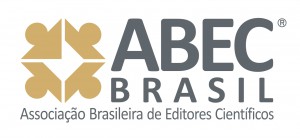Childbirth care under a trinomial obstetric model, its meaning from the couple’s point of view
DOI:
https://doi.org/10.5216/ree.v24.69616Keywords:
Nursing Services, Neonatal Nursing, Parturition, ObstetricsAbstract
Objective: to interpret the meaning of accompaniment of the father during the perinatal care. Method: qualitative, descriptive research, supported by the theory of social representations; 34 couples participated, selected for having been cared for throughout the perinatal care; data collection through interview, data analysis was carried out under an interpretive framework, using a chromatic technique, the results are discussed based on Moscovici's social representations, conceptualizing the category; the empirical data is confronted with the theory, thus capturing the logical reasoning. Results: perception of the father's participation and meaning of his accompaniment in the care, type of experience obtained, awareness of the husband in the care of the newborn, highlight the role of the father in comprehensive perinatal care, demonstrate his intervention as part of the trinomial. Conclusion: the mother reveals about the meaning of the father's participation during the delivery period the relevance of her presence.
Downloads
References
Moscovici S. Representações sociais: investigações em psicologia social. 9ª ed. Brasil: Vozes; 2012.
Hernández SR, Fernández CC. Metodologia de la Investigação. 6ª ed. México: Mc Graw Hill; 2018.
Fazio IA, Silva CD, Acosta DF, Mota MS. Alimentação e aleitamento materno exclusivo do recém-nascido: representação social do pai. Rev enferm UERJ [Internet].2018 [cited 2022 apr 12]; 26:e26740. Available from: https://doi.org/10.12957/reuerj.2018.26740.
Santos TCB, Scarparo HBK, Hernandez ARC, Sebastián Herranz J, Blanco A. Estudio psicosocial sobre las representaciones sociales de género. Diversitas: Perspectivas en Psicología [Internet]. 2013 [cited 2022 apr 12];9(2):243-55. Available from: http://ref.scielo.org/5jxrpb.
Sánchez Vásquez MJ, Blas Lahitte H, Ortis Oria V. Bioética y salud mental: reflexiones sobre la afección y la responsabilidad en la relación profesional-paciente. Revista Latinoamericana de Bioética [Internet]. 2015 [cited 2022 apr 12];15(2):96-107. Available from: http://ref.scielo.org/yrgdc7.
Guareschi P, Spink S. Textos de Representações Sociais. 14ª ed. Brasil: Vozes; 2013.
Bautista Rodríguez LM, Arias Velandia MF, Carreño Leiva ZO. Percepción de los familiares de pacientes críticos hospitalizados respecto a la comunicación y apoyo emocional. Rev Cuid [Internet]. 2016 [cited 2022 apr 12];7(2):1297-309. Available from: https://doi.org/10.15649/cuidarte.v7i2.330.
Parada RDA, Olivares PE. Humanización del cuidado durante el encuentro madre-recién nacido: una responsabilidad ética del equipo de salud. Revista Colombiana de Bioética [Internet]. 2015 [cited 2022 apr 12];10(1):134-47. Available from: https://doi.org/10.18270/rcb.v10i1.688.
Carvajal Carrascal G, Montenegro Ranírez JD. Higiene: cuidado básico que promueve la comodidad en pacientes críticos. Enfermería Global [Internet]. 2015 [cited 2022 apr 12];(40):340-50. Available from: https://scielo.isciii.es/scielo.php?script=sci_arttext&pid=S1695-61412015000400015.
Gomes CBA, Dias RS, Silva WGB, Pacheco MAB, Sousa FGM, Loyola CMD. Consulta de enfermagem no pré-natal: narrativas de gestantes e enfermeiras. Texto contexto - enferm [Internet]. 2019 [cited 2022 apr 12];28:e20170544. Available from: https://doi.org/10.1590/1980-265X-TCE-2017-0544.
Sousa APPA, Santos CSVB, Ferreira MMRS. Construir a confiança para o parto: avaliação de um programa de intervenção em enfermagem. Revista de Enfermagem Referência [Internet]. 2019 [cited 2022 apr 12];IV(20):27-36. Available from: https://doi.org/10.12707/RIV18073.
Amorim TV, Souza IEO, Salimena AMO, Carvalho ALO, Silva LF, Langendorf TF. Promoção da saúde materna a partir do vivido do parto de mulheres cardiopatas. Cogitare Enferm. [Internet]. 2017 [cited 2022 apr 12]; 22(4):e15641. Available from: https://doi.org/10.5380/ce.v22i4.51641.
Thuler ACMC, Wall ML, Souza MAR. Caracterização das mulheres no ciclo gravídico-puerperal e o incentivo à amamentação precoce. Rev enferm UERJ [Internet]. 2018 [cited 2022 apr 12];26:e16936. Available from: https://doi.org/10.12957/reuerj.2018.16936.
Montoya-Gaxiola LD, Corona-Figueroa BA. Dinámica familiar y bienestar subjetivo en adolescentes: su asociación y factores protectores. Enseñanza e Investigación en Psicología [Internet]. 2021 [cited 2022 apr 12];3(1):59-77. Available from: https://www.revistacneip.org/index.php/cneip/article/view/175.
Amaral RCS, Alves VH, Pereira AV, Rodrigues DP, Silva LA, Marchiori GRS. The insertion of the nurse midwife in delivery and birth: obstacles in a teaching hospital in the Rio de Janeiro state. Esc Anna Nery [Internet]. 2019 [cited 2022 apr 12];23(1):e20180218. Available from: https://doi.org/10.1590/2177-9465-EAN-2018-0218.
Published
Issue
Section
License
Copyright (c) 2022 Revista Eletrônica de Enfermagem

This work is licensed under a Creative Commons Attribution 4.0 International License.














